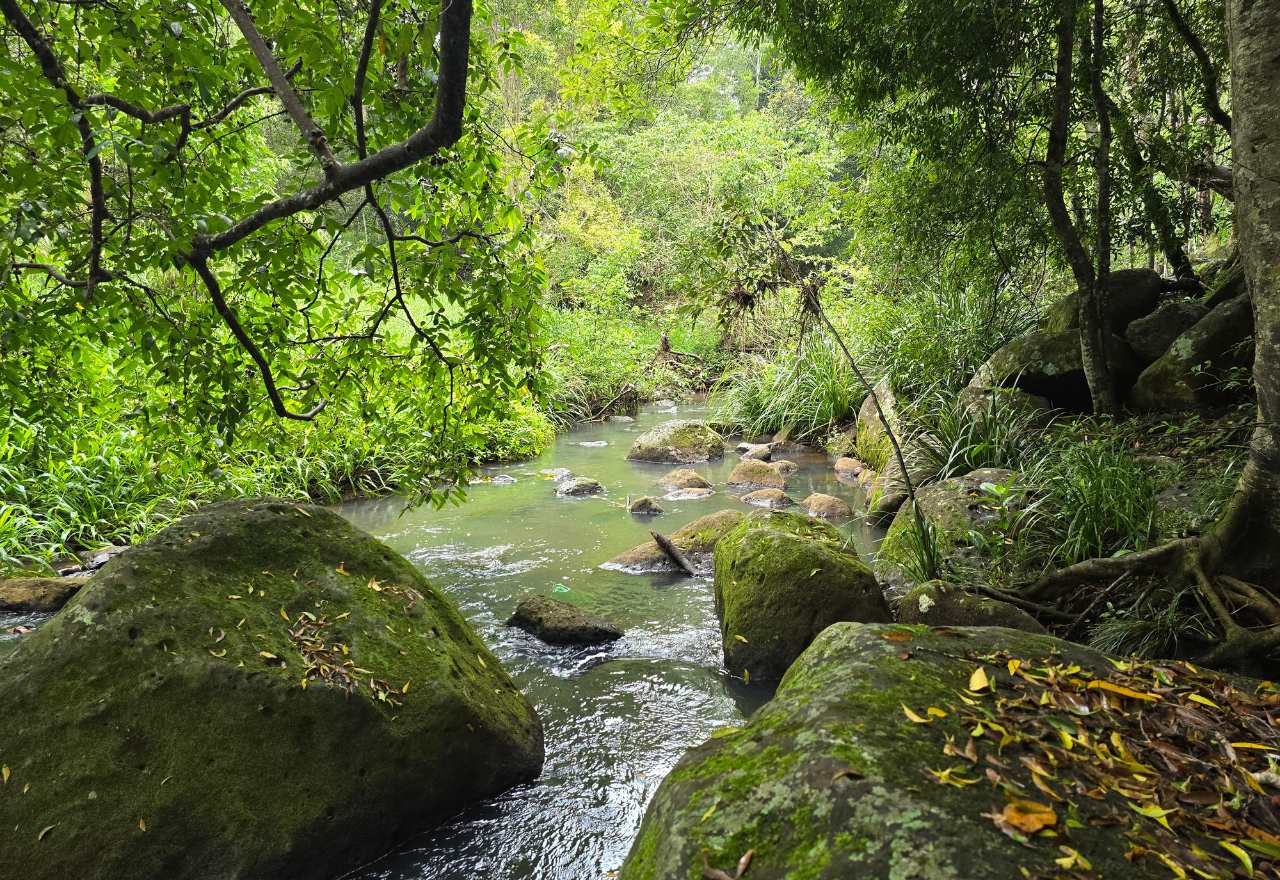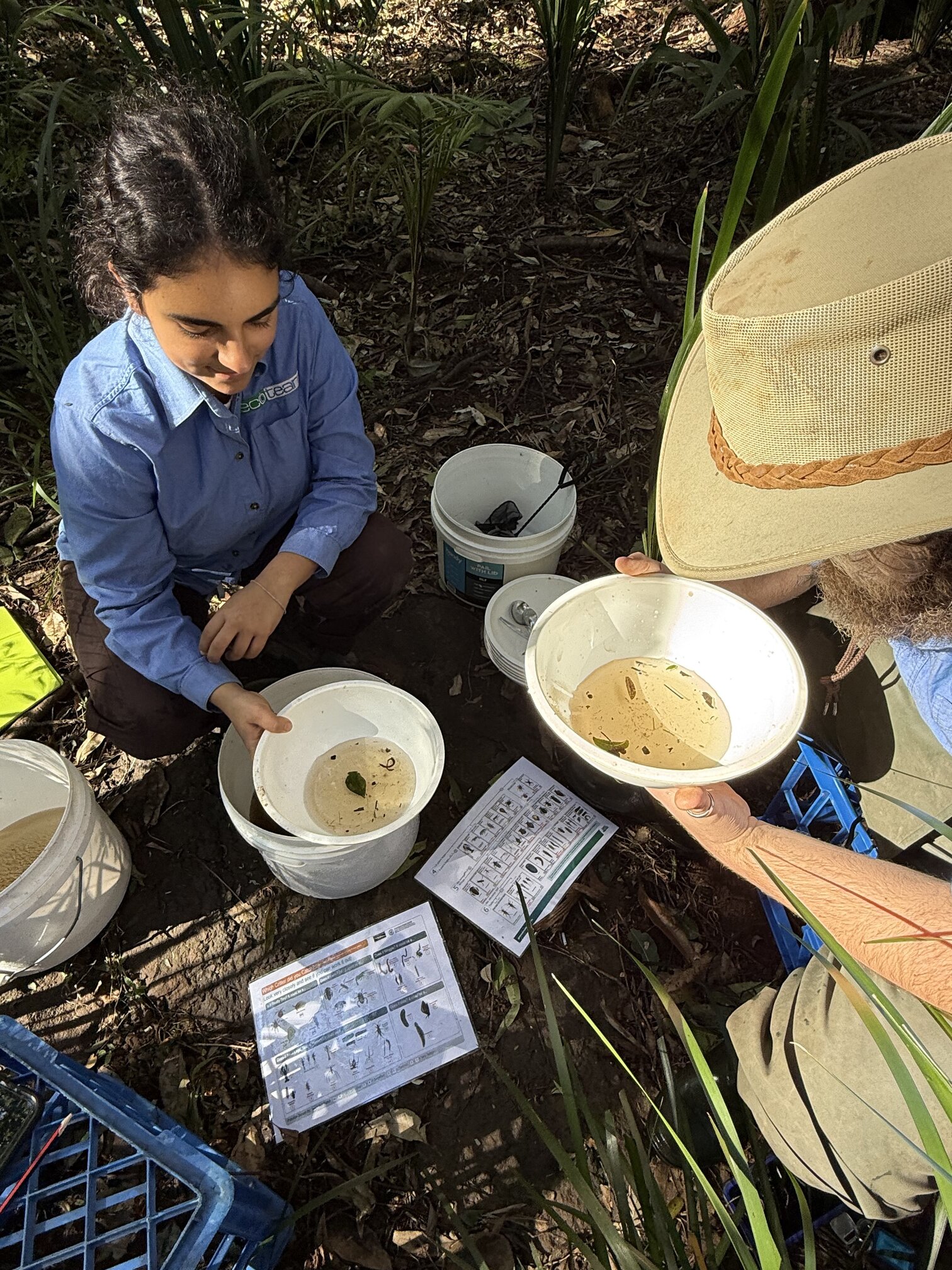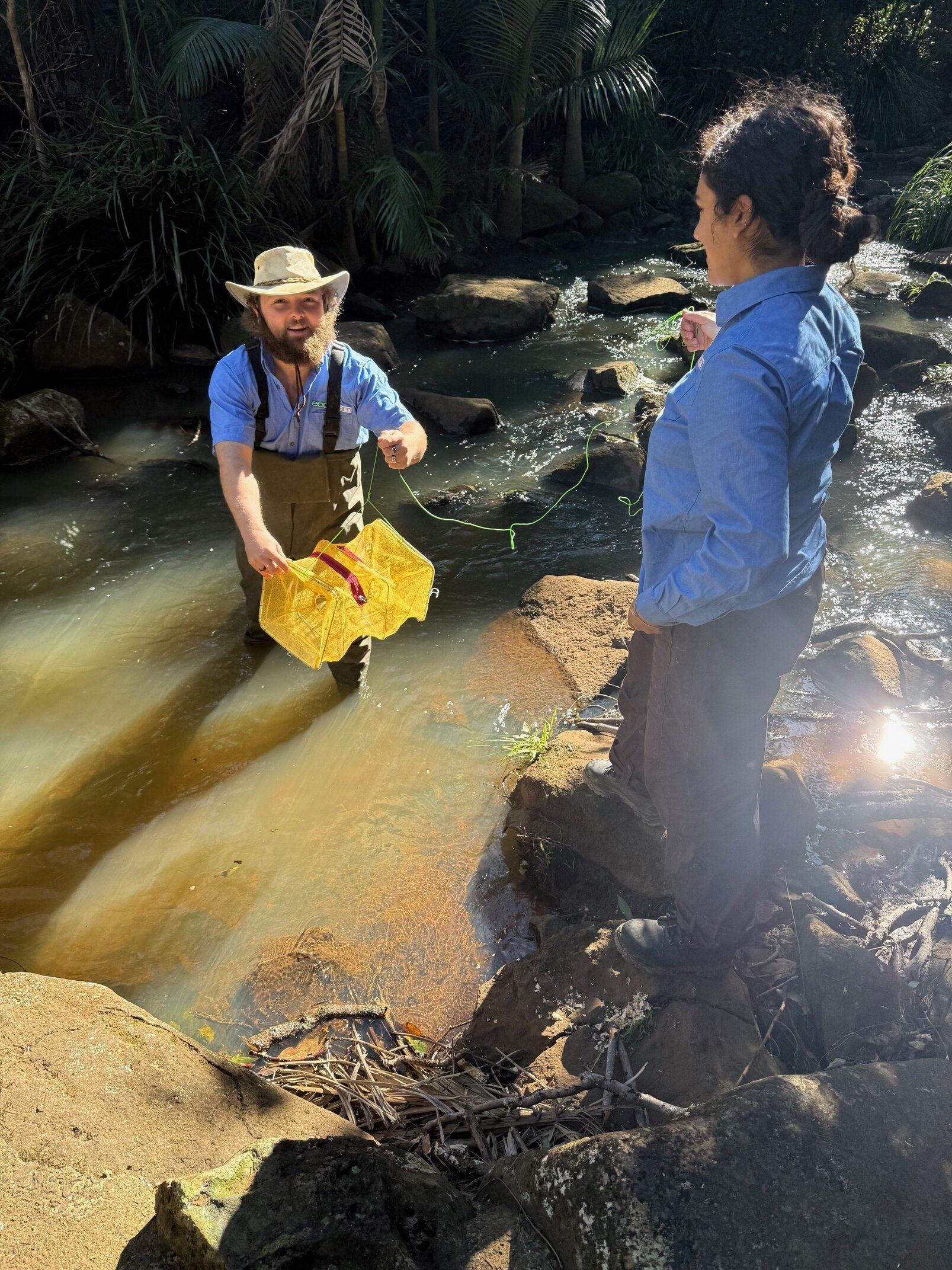Taking the pulse of Tucki Tucki Creek: new survey reveals recovery continues
16 August 2025, 8:00 PM

Goonellabah’s Tucki Tucki Creek is showing signs of ecological recovery thanks to the sustained efforts of two dedicated Landcare groups, according to ongoing water quality monitoring conducted by local environmental consultancy Ecoteam.
Ecoteam was founded in 2003 with a handful of founding staff members and is a Lismore business success story despite challenges such as COVID and recent major floods, with 22 employees at present.
Ecoteam very generously agreed to undertake detailed bi-annual stream and ecosystem health assessments on the Tucki Tucki Creek on a pro bono basis over a period of three years, commencing in December 2023. Since that start date, twice-yearly assessments by Ecoteam staff members have tracked the health of the creek at two key sites. Fresh water testing at Site 1 takes place upstream on the Tucki Tucki Creek near Birdwing Butterfly Gully in the area managed by Goonellabah Tucki Landcare, with Site 2 downstream at a pool and reach under Just Street Landcare’s stewardship.
The monitoring program combines water quality testing, macroinvertebrate sampling, and fish surveys to evaluate stream health. Field teams measure in-situ parameters like pH and temperature using handheld devices, collect water samples for laboratory analysis, and assess turbidity levels.
Aquatic macroinvertebrates are sampled with nets to gauge biodiversity and ecosystem health, while fish are surveyed using traps and nets to record species presence and abundance. These methods collectively offer a comprehensive picture of the creek’s ecological condition.
Initial findings and ongoing challenges
Results from the last two years indicate that water quality in the Tucki Tucki Creek has generally remained within Australian guidelines, with key indicators such as dissolved oxygen, phosphorus and turbidity staying stable. However, nutrient levels, specifically nitrogen and phosphorus, have exceeded recommended thresholds in recent sampling rounds.
Total nitrogen peaked at 0.52 mg/L at Site 1 in June 2025, and phosphorus levels also rose above guideline levels, likely due to increased stormwater runoff from heavy rainfall events, which occurred prior and during the past two sampling assessments. Despite these nutrient spikes, heavy metals such as lead, zinc, and arsenic have remained low, suggesting minimal contamination from industrial sources.
Encouragingly, biological indicators point to a healthier ecosystem. Macroinvertebrate diversity has increased; documented through improved macroinvertebrate assessment or ‘SIGNAL’ scores, which reflect better water quality. Fish diversity remains limited, with the Crimson Spotted Rainbow Fish consistently present, although their numbers fluctuate seasonally. Rarer species like Firetail Gudgeon and Catfish were only observed in December 2023, indicating that some aquatic fauna are still recovering.

(Ecoteam scientists examining macroinvertebrates)
Protecting our platypus population
Platypus face threats nationwide and locally due to habitat loss and water pollution. While the creek’s current water quality remains within acceptable limits for platypus survival, levels of nutrients like phosphorus are approaching thresholds that could impact their populations. Elevated nitrogen and phosphorus levels can reduce aquatic invertebrate prey and degrade habitat quality, increasing the risk of decline.
Maintaining and improving water quality through continued restoration and monitoring is vital to ensure the future of this unique species, which is sighted regularly at Tucki Tucki Creek.
Looking ahead: continued monitoring and restoration
Goonellabah Tucki and Just Street Landcare’s riparian planting and habitat restoration efforts appear to be making a positive difference, enhancing the creek’s resilience to storm events and improving overall ecosystem health.
The next phase of Ecoteam’s monitoring program will include new sampling sites plus data collection over a further three years in partnership with Goonellabah Tucki Landcare on its significant new project site bordering on the Tucki Tucki Creek below Kookaburra Terrace and further East. Approximately 10 hectares is being planted as part of a project funded by the Australian Government’s Natural Heritage Trust under the Urban Rivers and Catchments Program, supported by Lismore City Council’s Environmental Strategies Team.
This extensive new site will add to the approximately 18 hectares of regenerating riparian rainforest already planted along Tucki Tucki Creek which is enjoyed and appreciated by so many residents and visitors. Ecoteam’s onging testing across the new site aims to provide a baseline to measure potential long-term improvements in water quality and creek health at the largest single riparian planting project ever undertaken by Goonellabah Tucki Landcare.
Takeout from the water quality testing
Ecoteam senior environmental engineer and company director Lise Bolton oversees the water quality testing program, which provides the opportunity for a sizeable number of her scientific and other staff to undertake sampling and monitoring.

(Ecoteam's Jacob and Anna using a fish trap in the Birdwing Butterfly walk)
“We’re really happy to partner with Landcare groups and provide our knowledge and expertise on a sponsorship basis,” commented Lise. “We’d like to see the scientific assessment of the state of all our region’s waterways form the basis of an annual ‘Healthy Waterways Report Card’ which can inform everyone just how their favourite creeks, streams and rivers are doing.”
“The encouraging signs from Tucki Tucki Creek’s waterway health and water quality monitoring underscore the importance of sustained ecological restoration and vigilant water quality monitoring and management,” said Lise, adding that “Support from local government to establish a more widespread and comprehensive Healthy Waterways program would bolster these efforts, ensuring that Goonellabah’s creeks remain vibrant habitats for native species and a vital part of the community’s natural landscape.”
DENTISTS/DENTURES


